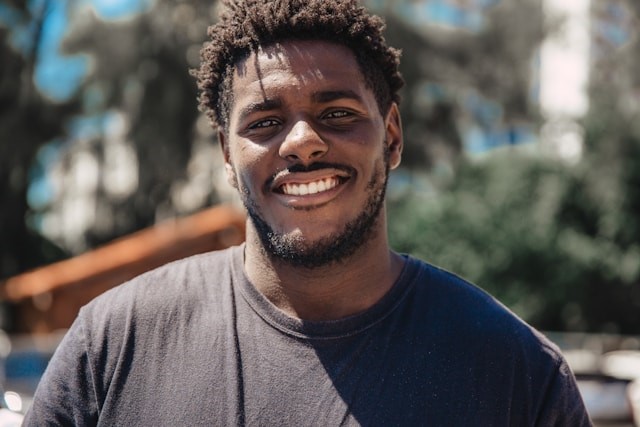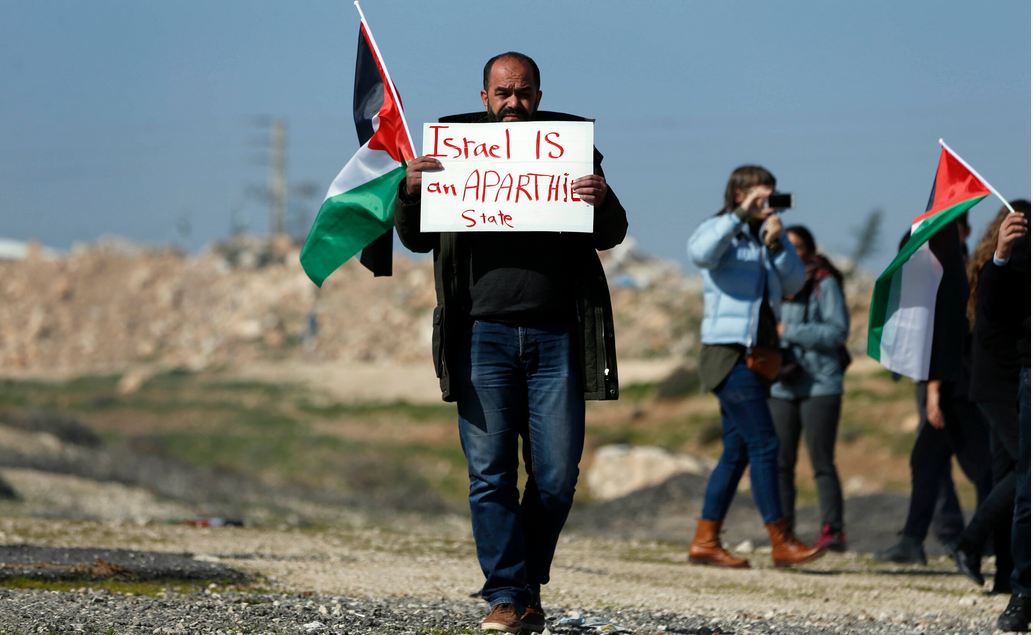Prof. Stephen Kiama, the Vice-Chancellor of the University of Nairobi, has been compelled to take another leave, just a month after he defied a similar order from the university’s council. The UON Council made the announcement and said that Prof. Ayub Njoroge Gitau who took on the role temporarily last month, will persist as the acting vice chancellor until further notification. Council Chairperson Amukowa Anangwe announced that the instruction followed a decision made on April 19, 2024, to enforce compulsory leave for Prof. Kiama, citing allegations of mishandling the university’s resources and bullying its staff. A portion of his statement stated as follows: “The council of the University of Nairobi, as the employer, is profoundly troubled about the continued harassment, intimidation, and misuse of staff and resources by unauthorized people, despite its earlier pronouncement on the matter,” He said. In addition, the council decided to issue new notifications allowing for the execution of responsibilities in 24 administrative positions. Staff affected by the leadership deadlock at the university and any staff relocations and changes made against the council’s authority have been instructed to promptly resume their former posts. Following the April leave announcement, Prof. Kiama dismissed the reports and advised all members and students to pay no attention to the directive. “This matter has sparked considerable public discussion and has the potential to lead to apprehension to both members of staff and students,” said Kiama at the time. “In the meantime, I urge everyone to reaffirm our dedication to the task of directing our university to a truly globally competitive university transforming society.” Professor Kiama’s troubles began on September 1, 2023, when he abruptly concluded his leave and resumed duties earlier than expected. The unexpected saga unfolded when the UON council approved Prof. Kiama’s request for a six-month leave, beginning on August 1, 2023. Professor Ayub Njoroge, who is still a dean at the university, was then appointed as the acting dean shortly after Professor Kiama was sent on leave in April 19, 2024.
Health Benefits of Physical Workout
Exercise offers significant advantages for your mind, body, and heart. Despite its importance, only a minority of individuals participate in it regularly. Globally, as reported by WHO in 2016, 28% of adults aged 18 years and above were not sufficiently active in physical activities. Below are some of the benefits of being physically active: Helps with weight management Engaging in physical exercise boosts metabolism, leading to a higher calorie expenditure by the body. This calorie reduction contributes to weight loss. However, for optimal effectiveness, exercise should be coupled with a decrease in calorie intake. To sustain a healthy weight, it’s important to incorporate daily physical activity into your routine. Strengthens bones and muscles Remaining physically active contributes to maintaining strong bones and muscles. With aging, changes occur in the musculoskeletal system that can lead to decreased bone strength. When muscles exert force on bones, it stimulates bone regeneration and helps preserve or enhance bone strength. Muscle strength is enhanced by engaging in activities that provide resistance. Regular physical exercise is crucial for bone and muscle health, as it enhances bone density and strength, reducing the risk of fractures and conditions like osteoporosis. people exercising in the gym Improves brain health and memory Engaging in physical exercise can positively impact your brain by decreasing stress hormone levels, thereby reducing the risk of mental health disorders. It also enhances your brain’s capacity to create new neural connections, which boosts lifelong learning abilities. Additionally, exercise promotes optimal blood flow to the brain, facilitating the delivery of essential nutrients. Keeps the skin healthy Physical exercise enhances blood flow and circulation throughout the body, which boosts the delivery of oxygen and nutrients to the skin. This contributes to a radiant and healthy complexion while also reducing inflammation. Moreover, exercise helps minimize the production of free radicals and oxidative damage, which can otherwise result in cellular and tissue harm. Reduces risks of chronic diseases Consistent physical exercise enhances cardiorespiratory fitness by boosting cardiac output and improves blood glucose regulation. It also increases mitochondrial density, leading to higher energy production. Furthermore, regular exercise reduces the risk of chronic diseases such as heart disease, type 2 diabetes, cancer, Alzheimer’s, depression, anxiety, and Parkinson’s disease. Are you still delaying starting your physical exercise routine, even after learning about its advantages? Whether you want to manage your weight, strengthen your bones and muscles, boost your brain and memory, maintain healthy skin, or reduce the risk of chronic diseases, now is the perfect moment to begin your workout regimen. Make the choice today and initiate your physical exercise routine.
Ways To Beat Procrastination
Delaying tasks is like a thief stealing time away from you. It turns simple tasks into difficult ones and makes hard tasks even harder. Once procrastination takes hold, it can be challenging to shake off. Do you struggle to concentrate on your work? Do you find yourself putting off tasks until the last minute? Take a look at these helpful tips and techniques for overcoming procrastination: Make lists of tasks, set deadlines, and determine what’s most important Keep track of all the tasks you need to complete within a certain timeframe. This list might consist of short-term tasks you can tackle daily or weekly, as well as long-term objectives that could take months or years to accomplish. Jot down this list either in a notebook or on your phone. Establish goals for each task and organize them based on their level of importance. Before going to bed each night, review your daily tasks to stay on track. Divide tasks into smaller parts Handle tasks gradually to avoid feeling overwhelmed. Instead of fretting over completing a week’s worth of tasks, break down your major challenge into smaller, manageable steps. Refrain from creating lengthy, chaotic to-do lists. Avoid multitasking, as it may lead to feelings of overwhelm or stress. A lady reviewing her activities on a diary while resting on the bed. Begin your day by tackling the most challenging tasks After having breakfast and fully waking up, you’ll feel energized in the morning. Take on the most difficult task on your agenda at that time. Once completed, you can then focus on the less challenging tasks for the remainder of the day. However, if you find yourself feeling sluggish in the morning, it’s best to avoid this approach as it may increase the likelihood of making careless mistakes. Reduce distractions Choose a workspace that suits your needs. The environment where you work or study can greatly impact your motivation. For instance, if you’re preparing for a test, select a quiet area with minimal distractions and enough room to spread out your study materials. Utilize apps to minimize online distractions; examples include AppDetox, Procraster, Freedom, Self Control, and Cold Turkey Blockers. If your phone distracts you, keep it out of reach or in another room, or turn it off completely. Commit to rewarding yourself. Inspire yourself to finish a task by looking forward to something enjoyable The excitement of treating yourself can help you push through challenges. Consider rewarding yourself with a beloved meal, watching a movie, or purchasing something you’ve been wanting. However, be cautious not to excessively reward yourself. Reserve major celebrations for when you accomplish something significant. Occasionally, procrastination can be beneficial as it allows ample time for researching a topic. However, this is only beneficial for individuals who are determined to attain superior outcomes. Postponing tasks has been proven to result in negative consequences, such as job loss. Utilize the strategies mentioned above to combat procrastination.
Steve Albini, a US Alt-Rock Musician and Producer, Died at the Age of 61.
Steve Albini was more than just another musician in the American indie movement of the 1980s and 1990s; he was a force of nature. He fronted bands such as Big Black and Shellac, delivering a rough, combative, and fiercely individualistic sound. However, his influence extended well beyond his own music, altering the sound of many bands through his work as an engineer and, reluctantly, producer. Albini’s fingerprints can be found on some of the era’s most renowned records. The Pixies’ “Surfer Rosa,” a classic of alternative music, would not be the same without his particular recording approach. Similarly, Nirvana’s “In Utero,” the harsh follow-up to their megahit “Nevermind,” would not have the same intensity without Albini’s influence. Albini, ironically, wasn’t a fan of Nirvana at first because he thought they were derivative of the Seattle sound. Steve Albini playing the guiter However, he noticed a band being pressured by a large label and, as a defender of artistic integrity, took on the project with the goal of capturing their raw energy. The resultant conflict with the label about the album’s raw sound became famous, yet “In Utero” eventually went on to sell millions, proving that artistic vision could still find success on its own terms Albini disliked titles such as “producer”. He saw himself as an engineer, a facilitator tasked with properly capturing a band’s soul rather than manipulating it. This attitude expanded beyond the recording procedure. Albini notoriously denied royalties, feeling it was wrong to benefit indefinitely from an artist’s work. He charged a flat fee and concentrated on running his own studio, Electrical Audio, in Chicago, which became a haven for independent artists looking to create music free of major label interference. Electrical Audio was more than simply a recording studio; it represented Albini’s steadfast dedication to DIY ethics in the music industry. Albini’s legacy goes beyond the technical requirements of recording. He was an outspoken opponent of large labels’ exploitative methods, advocating musician’s equitable pay and artistic autonomy over their work. His outspoken temperament and uncompromising attitude frequently got him in hot water, but they also earned him the respect of innumerable musicians who considered him as a champion of artistic integrity. Unfortunately, Albini’s death shortly before the release of Shellac’s highly anticipated album, “To All Trains,” created a gap in the indie music community. However, his influence on innumerable musicians, as well as the sheer volume of legendary albums he helped create, assures that his legacy will be felt for future generations.
Tips for Healthy Relationships
Did you know that 47% of people say dating is harder than it was 10 years ago? Every romantic relationship experiences its share of highs and lows, requiring effort, commitment and an openness to grow with your partner. Regardless of past setbacks or challenges in your previous relationships, there are ways to sustain closeness, discover satisfaction and embrace enduring joy. Getting serious about a relationship and aiming for longevity and health? Or perhaps seeking to strengthen the bond with a committed partner? Here are tips tailored to both situations. Listening and communicating without passing judgment Having trust and mutual respect for one another Allocating time for one another Collaborating together as a cohesive unit Centering on how the relationship can be advantageous for both parties Engaging in wholesome activities as a couple Recalling specifics about someone’s life Achieving personal fulfillment independently, rather than relying solely on a partner for healing Following these tips leads to healthy relationships. Characteristics of healthy relationships include: You nurture a deep emotional bond with each other. Each of you actively ensures the other feels cherished and emotionally satisfied. There’s a distinction between receiving love and truly feeling its warmth and presence. Express your deepest feelings to your partner and let them know you adore them. The more you open up about your thoughts and emotions, the more you’ll both feel heard and emotionally satisfied. A couple who are in deep emotional moments You’re unafraid of engaging in (courteous) differences of opinion. In a solid relationship, some partners calmly discuss issues, while others might get loud and passionately argue. But what matters most is not being scared of disagreements. You should feel secure to talk about what’s bothering you without worrying about getting back at each other, and be able to fix problems without putting each other down or always needing to win. You maintain connections with friends and hobbies outside of your relationship. Despite what you see in romantic stories or films, no single person can fulfill all your needs. Actually, expecting too much from your partner can stress your relationship. To keep your romantic bond strong, it’s vital to have your own life beyond the relationship, stay close with family and friends, and keep doing what you love. 4. You talk openly and truthfully with each other. Effective communication is essential in every relationship. When both partners understand their desires and can openly share their needs, worries, and wants, it builds trust and deepens the connection between you. In conclusion, ensuring a healthy relationship requires diverse strategies that prioritize communication, mutual respect, trust, and individual growth. Remember, healthy relationships are not only built on sex but on various tips that are outlined above.
How Can We Help Children Maintain a Healthy Weight?
Most children are of unhealthy weight- either too obese or too malnourished. For example, statistics done in Kenya, which is a third world country, indicate that 11 per cent of children are underweight, with four per cent wasted. According to recent studies, approximately 38 million children under the age of 5 were overweight or obese in 2020, marking a troubling trend that demands our attention. Establishing healthy habits lays the foundation for lifelong well-being in children and adolescents. Prioritizing nutritious eating and regular physical activity not only supports their growth and development but also serves as a preventive measure against chronic health issues. Additionally, these practices have been linked to improved academic performance among students. However, fostering good mental and physical health goes beyond just diet and exercise. Ample sleep and reduced screen time are also vital components. To aid children and teens in cultivating healthy habits, parents, guardians, and teachers can implement the following suggestions: Ensure Adequate Sleep Children and adolescents require more sleep compared to adults, with the required amount varying according to age. Insufficient sleep is linked to obesity, partly due to its potential to increase appetite and reduce physical activity. malnourished black child Limit Screen Time Excessive screen time among young kids correlates with various adverse effects, including disrupted sleep patterns, weight gain, decreased academic performance, and compromised mental health. By cutting back on screen time, families can create opportunities for bonding through shared activities, enhance sleep quality, and reduce exposure to cues promoting unhealthy eating habits. Encourage children and teens to reduce the duration spent watching TV, playing video games, or using smartphones and tablets. Instead, motivate them to engage in enjoyable activities with friends, family, or independently, which promote physical activity and social interaction. Cultivate Nutritious Eating Habits To help children and teens develop healthy eating habits: Ensure an ample supply of vegetables, fruits, and whole-grain items. Opt for lean meats, poultry, fish, legumes, and beans as sources of protein. Incorporate low-fat or fat-free milk and dairy items like cheese and yogurt. Promote water consumption among your family, favoring it over sugary beverages. Restrict the intake of added sugar and saturated fat. Moreover, you can: Motivate children to enjoy nutritious breakfasts and lunches, both at home and school. Explore school menus together with your children, fostering their willingness to experiment with different foods. Demonstrate healthy eating habits within the household. Keep in mind that incremental adjustments each day can pave the way for achievement! Children playing football Assist Children and Adolescents in Maintaining an Active Lifestyle by Engaging in Physical Activities Kids aged 3 to 5 should stay active all day. Children and teens aged 6 to 17 should be active for at least 60 minutes daily. This should include activities like running, jumping, or anything that gets their heart pumping faster. They should also do exercises to strengthen their bones, like running or jumping, and activities to strengthen their muscles, like climbing or push-ups. In conclusion, ensuring healthy habits such as nutritious eating, regular physical activity, adequate sleep, and limited screen time, parents, guardians, and educators can empower children and teens to lead healthier lives. These simple yet vital interventions lay the foundation for lifelong well-being, ensuring that our younger generations thrive both physically and mentally. Prioritize your child’s health, empower their life well-being!
The DV Lottery Program: What You Should Know After Winning
The results of the United States Diversity Immigrant Visa (DV) Program (Green Card Lottery) are out and the US Department of State published names on its portal on May 4, 2024. The DV-2025 applicants can check their statuses from the portal. Now that you’ve won the Green Card Lottery, what is next? It means you have been shortlisted for an immigrant Visa interview. It doesn’t mean you will go to the USA immediately as there is a vetting process. What follows is to prepare for the interview by getting the requisite documents like a passport, ID, good conduct, marriage, and academic certificates. Although the process is free, save for visa-related costs such as photographs. Beware of scammers promising quick fixes at this point. Stories abound of applicants losing this life-changing opportunity due to misleading information. You need a plan and get a host. A host is a person who’s willing to accommodate you until you get your footing in America. The host will be your contact person when you step onto US soil. The host determines your success or failure as they are crucial in exposing you to networking. Highrise building in Newyork city You will also play a critical role by following the host’s instructions. The host expects you to behave, present a good attitude, be flexible, and be respectful. Maintaining a healthy self-care routine is paramount for your, mental, spiritual, and emotional health. The DV lottery program gives you all the rights an American citizen has including medical, education, DL, and business opportunities, except voting. Preparation to Transition After Getting the Immigrant Visa Before you migrate to the land of opportunity, craft a well-researched plan. Get the facts right and dispel hearsay. You are responsible for creating your opportunities, so organize your credentials. Get all your certifications no matter how small because you will need them to excel in the US. As you wait for your Visa, acquire some plumbing, electrical, haircut, masonry, or carpentry skills. They pay handsomely. You will put in hard work and dig deep into your talent to realize your dreams as you don’t have to know anyone with connections to excel in America. White building and US flag It helps to follow your dreams by customizing your credentials to the American system. Tailor your CV to suit the expectations of the American employer. Your interpersonal skills often manifest more than your academic qualifications in the American job market. A mentor you admire and understand can help you here, as they understand the American culture. Appreciate and participate in the American culture by indulging in its norms for a sense of belonging. As you push your passion, create a trajectory toward your vision and network through religious, local, or recreational gatherings. The church, club, or hobbies are the networks that are critical for personal, spiritual, and professional growth. There is a rich potential for opportunity in your networks. Finally, it is paramount to Invest in yourself and back home in projects with guaranteed returns. Don’t just send money, but research on credible projects.
Prepare for More Hardship! Kenya and the East Africa Region Should Expect Food Shortages and Disease Outbreaks Due to the Ongoing Floods
With the ongoing torrential rain and floods causing the deaths of hundreds of people, ruining infrastructure, and sweeping away farmlands, Kenya is preparing for a potential shortage of food. Kenya and its neighbors, Tanzania, Uganda, Burundi, and Rwanda, have been experiencing rainfall stronger than usual due to El Nino. The raging floods have swept away villages and buildings, and now residents in those countries should prepare for more hardships. Kenya, especially, has bore the brunt of the rain and floods. So far, according to President William Ruto, at least 210 people have lost their lives. According to government data, by the end of April, over 4000 heads of cattle have died. Additionally, an estimated 28,000 acres of farmland have been destroyed by the floods. In more alarming news, nearly 300 small businesses in the country have also felt the wrath of the torrential rain. The government has sprung into action and set up temporary camps for the displaced people. Cases of conflict over grazing land amongst the pastoral communities hard hit by the flooding are also on the rise as people jostle for scant resources. Kenyans have also been warned about animals such as Crocodiles and Hippos, as they are likely to be in the flooded areas. Woman walking in a flooded area Some aquatic animals have escaped their enclosures in museums and national parks. The floods have destroyed water sanitation plants and waste disposal systems, leading to fears that water-borne diseases could break out. For example, the 2019 floods caused by El Nino led to a cholera outbreak. The floods have also led to the formation of pools of stagnant water. Such pools offer an ideal environment for mosquitoes to breed and could cause a malaria outbreak. According to health officials, even before the rain started pouring, the East African countries were already grappling with malaria and measles outbreaks. Tanzania, the leading producer of food in the region, has already recorded a significant dip in productivity. In addition to disease outbreaks and a looming food shortage, the torrential rain has caused massive damage to roads and bridges. As a result, many areas are now totally inaccessible. The adverse weather patterns have also led to a spike in mental illnesses, as many people try to come to terms with the deaths of loved ones, loss of livelihood, and their possessions getting lost in the floods.
Kenyans Disgusted by Pastor Kanyari’s “Cringeworthy” TikTok Video
Kenyans are once again displeased by Pastor Victor Kanyari’s trending live TikTok video where he was receiving CDs from a fan. Pastor Kanyari, who joined TikTok platform on April 04, 2024, has been trending and receiving gifts from his fans. However, this time round, a female fan decided to give him condoms. To the surprise of many Kenyans, the pastor graciously received the gifts. Faith M Peters, a TikTok influencer, handed the scandal-ridden preacher three presents, including a pack of condoms, before expressing her love for him publicly. This happened on Sunday, May 19, when Pastor Kanyari’s church was filled with TikTokers as they termed him as the TikTok “president.” Faith then disclosed that she had a vision of herself and Kanyari having a lavish wedding celebration. She boldly told the pastor that she is aware many Kenyan ladies are after him, and insisted that he should use protection but not reject them. Faith, who left the congregation in stitches of amusement, told the pastor to stop suffering for she is fertile and could give him more kids. Much to the surprise of Kenyans, Pastor Kanyari positioned himself beside Faith, assertively holding the presents as he blushed. Which TikTokers and Musicians Criticized Pastor Kanyari? Lydia Wanjiru, a Kenyan TikToker, emphasized that content creators should respect the God’s Altar. Lydia, in a TikTok video, questioned Pastor Kanyari’s followers and why they are still following him calling him their leader. She termed the followers as people who are already brainwashed and should be disciplined. Lydia Wanjiru TikTok clip criticizing Pastor Kanyari. Another TikToker, Peter Kioi, advised Kanyari to value himself as a pastor and set boundaries with his online fans to ensure that his church is respected. He reminded him that, being a man of God, he should avoid flirting with women and should fear God. Other TikTokers like Big Daddy, Mali Safi and Nyako rebuked Kanyari for his association with women and advised him to stay away from them before they damage his reputation. Nadia Mukami, a Kenyan Singer and Songwriter, took the action seriously and publicly criticized the pastor’s video. Nadia insisted that content creation should have limits. She described the “clip” as cringe and inappropriate for a pastor. She expressed her concerns through her instagram stories which read as follows: “That PST Kanyari video is cringe!! Kuna limits ya madhabahu. (There are limits for the altar.) Hii content creation iwe na mipaka jameni! (This content creation should have limits.) If not for the respect of the church and our religion, but for the fear of God. Madhabahu hayachezewi. (The altar should not be disrespected.)” Nadia Mukami who has criticized Pastor Kanyari’s video. Nadia’s comments indicate an increasing worry among Kenyans regarding the actions of the pastor since he joined TikTok. Elvis Oniango, decided to take further action and wrote a letter to the Kenya Film Classification Board and Ministry of Interior and Coordination of National Government. He complained that the pastor’s behaviour on TikTok undermines public morality and is not appropriate for young viewers. He urged KFCB to investigate the pastor’s TikTok content, regulate church activities, monitor online conduct and provide clear guidelines and enforce compliance. He said that addressing Pastor Kanyari’s issues will be important in maintaining the integrity of religious institutions and protecting the moral welfare of the society. Both the KFCB and Ministry of Interior Coordination of National Government are yet to respond.
5 Countries With the Largest African Diaspora Population
DePaul University describes African diaspora as Central and West African descendants who have moved to other continents. They influence different regions with their culture and language. Still, a large number of Africans migrated to America during the Atlantic Slave Trade. The History Channel indicates that the trade took place between 1500 and 1860, resulting in the relocation of over 12.5 million people on ships. Even so, many people died before reaching their destinations. In this post, we will discuss five countries with the most African diasporans. 1. Brazil The North American Congress of Latin America released a comprehensive report in 2022 showing that Brazil has the most African diaspora in South America. They comprise 120 million of the country’s population. Still, black Brazilians have faced racism since 1960. The government’s statistics indicate that the COVID-19 virus affected them the most. Moreover, Afro-Brazilians battle several human rights issues like sexism. Lady enjoying nature 2. The United States Pew Research Center discovered in a study that the United States has about 47.2 million black citizens. This is about 14.2 percent of its population. Also, the number has steadily increased since 2000 by 30 percent. The Research Center analyzed the University of Minnesota’s Public Use Microdata Series (IPUMS) and the 2021 American Community Survey (ACS) from the Census Bureau’s microdata. The agencies used several demographic groups to calculate the African diaspora populations. These included the Black Hispanic people, single-race non-Hispanic Black people, multiracial non-Hispanic Black people and the total Black population. 3. Colombia The National Administrative Department of Statistics of Colombia published a report in 2018 stating that the country had about 3 million black citizens. However, this was a huge drop from the 4.3 million blacks that the agency calculated in its 2005 survey. World Bank showed that most of them resided along the Pacific coast. Also, the United Nation’s Economic Commission for Latin America and the Caribbean (ECLAC) indicated that many Afro-Colombians live in Cali and Cartagena. 4. Venezuela PBS shows that Venezuela is another South American nation with many African diasporans. It calculated their number while considering factors like racism, their socio-economic status and slavery. Barlovento is a favorite city of Black Venezuelans who total 1.8 million. 5. Mexico Congress founded the Wilson Center which discovered that Mexico has 2,576,213 Afro-Mexican and Black citizens, making up about 2 percent of its population. Of these, 50.4 percent are women and 49.6 percent are men. As of 2020, about half of Mexico’s black population resided in Jalisco, Mexico City, Oaxaca, Veracruz, Mexico State, and Guerrero. The African diaspora has rapidly increased over the years. Some people relocate to other continents for studies, business, and jobs. Yet, others settle permanently in foreign countries and stop investing at home. Brazil, the United States, Colombia, Venezuela, and Mexico have the largest African diaspora.
Israel and Palestine: A History of the Never-ending Conflict in Gaza
Hamas launched a devastating and surprising attack against Israel on 7 October last year. During the attack, dozens of fighters from the Palestinian Jihadi group swarmed into Jewish settlements near and around the Gaza Strip. In the aftermath of the bloody attack, more than 1200 people were reportedly left dead. Additionally, the terror group took another 250 victims as hostages. Since then, Israeli forces have been conducting ground and air offensives in the area, claiming that they are trying to flush out Hamas members. More than 30,000 Palestinians have so far died in the attacks, with many being forced out of their homes and into overcrowded refugee camps. Palestinians displaced from Gaza But what historical events have led us to the current situation between Israel and the Palestinians? The state of Israel came into being in 1948. Before then, the whole area was known as Palestine, under the rule of the Ottoman Empire. Britain assumed control of the area after the Ottomans were defeated in World War One. Back then, the area was inhabited by Jews, who were the minority, and by the Arabs who by far outnumbered all the other ethnic groups. In 1917, Arthur Balfour, the British Foreign Secretary promised the Jewish community in his country that he would establish a “national home” for them in Palestine. This promise was dubbed the Balfour Declaration. The League of Nations, the forerunner of the current United Nations endorsed this declaration in 1922. The declaration ramped up tensions between the Jews and the Arabs. The Jews insisted that Palestine was their ancestral homeland, but the Arab majority was vehemently opposed to this, insisting that the land belonged to them. Then in 1947, The United Nations endorsed a vote for the creation of two states: Jewish, and Arab. While the Jewish leaders were okay with the proposal, the Arabs declined. The two-state plan was dead. Meanwhile, more and more Jews were moving into Palestine from Europe, escaping Hitler’s campaign of mass murder against them. The Creation of the State of Israel Faced with unrelenting attacks from Jews against their occupation of the area, and unable to bring peace between the warring groups, Britain withdrew from Palestine. In return, the Jewish leaders formally declared that they would form the state of Israel, a country that would be a haven for every Jew in the world. One day after this bold declaration, five neighboring Arab countries declared war on the infant state of Israel. The fighting went on for approximately one year. By the time a cease-fire was called, Israel was in control of a majority of the area formerly known as Palestine. Meanwhile, Jordan occupied the West Bank, and Gaza fell under Egypt. Israel occupied East Jerusalem, while Jordan was in charge of the west. Because there was never a formal peace deal, intermittent fighting continued in the region. Another war broke out in 1967, leaving the increasingly powerful state of Israel in control of the West Bank, a huge chunk of the Syrian Golan Heights, the Sinai Peninsula, and the strategic Gaza Strip. Until the war that started last year, most of the Palestinians had been living in Gaza. Israel refuses to let them go back to their original homelands, claiming that such a move would cause an existential threat to their Jewish state. Israel claims the entire city of Jerusalem as its capital. The Palestinians claim East Jerusalem as the heart of any future State of Palestine. Former US President, Donald Trump formally recognized Jerusalem as the capital of Israel. There have been fears that the move will only embolden the Israelis to further occupy more land. Map showing palestinian land which was taken by the Israelites Israel has been steadily building settlements in East Jerusalem and the West Bank over the years. More than half a million Jews currently live in the two disputed pieces of land. The settlements are considered illegal under international law. But emboldened by her superior armed forces and steadfast support from the United States, Israel continues to spit in the face of critics. Why Israel is Currently Waging War on Gaza Currently, the militant group Hamas governs Gaza. Hamas took control of the area after the Palestinian elections in 2006. After emerging victorious, Hamas then ousted rival group Fatah which was under the leadership of President Mahmoud Abbas. The Islamist militia group has the stated mission of wiping Israel off the map. It is in the list of terror groups in countries such as the UK and the US. Since seizing control of Gaza, Hamas has engaged Israel in several skirmishes. Their attacks, especially by firing rockets toward Israel have led to the Jewish state and neighboring Egypt imposing a partial blockade on the Gaza Strip. Ordinary Palestinians have always been critical of the blockades, saying they punish ordinary people for crimes they are not responsible for. In response to rocket attacks from Hamas, the Israeli armed forces usually respond with deadly air raids, which often than not lead to the deaths of innocent Palestinians. Man sitting looking at a city that has beeen destroyed These are some of the reasons that could have led Hamas to carry out its deadly offensive against Israeli civilians Additionally, an estimated 4,500 Palestinians are languishing in Israeli prisons. Hamas could have taken those hostages to force Israel to release those prisoners. The United States, the European Union, and many other Western powers have steadfastly supported Israel in its never-ending conflict with Hamas and countries such as Iran. For instance, the US, which is the Jewish State’s biggest friend, has pumped more than $300 into Israel, in the form of economic aid and armaments. The US has also promised more missiles, precision bombs, and ammunition to Israel. Using this deadly weaponry, Israel has managed to turn a huge chunk of Gaza into rubble, killing thousands of Palestinian women and children in the process. Meanwhile, Russia and China have avoided the temptation to criticize Hamas for its attack in
Learning Paralyzed for the Second Week As JSS Teachers Strike Goes On
Students in grades 7 and 8 continue to idle in class as intern teachers still hold their ground. Junior secondary school (JSS) learners in public schools remain idle in classes, with no one coming to teach them. The JSS teachers’ strike has been going on over the past week and is continuing into its second week now. The paralyzed learning, which has affected over 2.5 million learners in grades 7 and 8, seems not to end soon as JSS teachers are not bowing. One of the demands that the teachers want the government to address is the staff shortage, which has been an issue since the beginning of the JSS program. The intern teachers are also demanding permanent and pensionable employment terms. In addition, intern teachers in different parts of the country demand full payment for the periods they’ve worked without pay. Since the rollout of the JSS program, up to 46,000 teachers have been deployed across the country. Many of these teachers are contracted by JSS and are expected to teach grades 7, 8, and 9. The program is now in its second year, which means grade 9 is expected to roll out next year. KUPPET joins JSS teachers for protests on the streets The strike by the JSS teachers is strongly backed by The Kenya Union of Post-Primary Education Teachers (Kuppet). Kuppet is urging the government to set aside funds to pay intern teachers. According to the union, KShs 17,000 paid to the intern teachers is insufficient, and many are depressed due to the poor pay. KUPPET Secretary General Akello Misori wrote a letter addressed to Parliament, the Teachers Service Commission, and the National Treasury on Tuesday. The union is seeking intervention from these bodies to ensure learning and teaching resumes. The letter addressed to the TSC urges the employer to set aside a meeting with the union to discuss the strike issue and find a solution. In a separate letter addressed to the Principal Secretary of the National Treasury, the union wants the treasury to initiate the process of setting aside funds for the permanent and pensionable employment of teachers. KUPPET’s letter also urges parliament to use the ongoing budget-making process to appropriate funds for the confirmation of all 46,000 teachers, not just 26,000. The striking teachers are confident that their issues are valid, as they’re backed by the Labour Relations Court’s ruling that nullified internship programs for trained, registered, and licensed teachers. While the government has yet to address these teachers’ concerns, all affected parties are only hoping that they come to an agreement soon for the sake of the affected learners in public schools.













